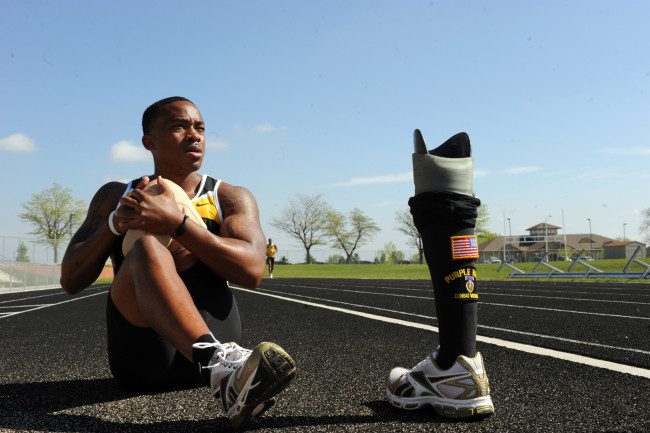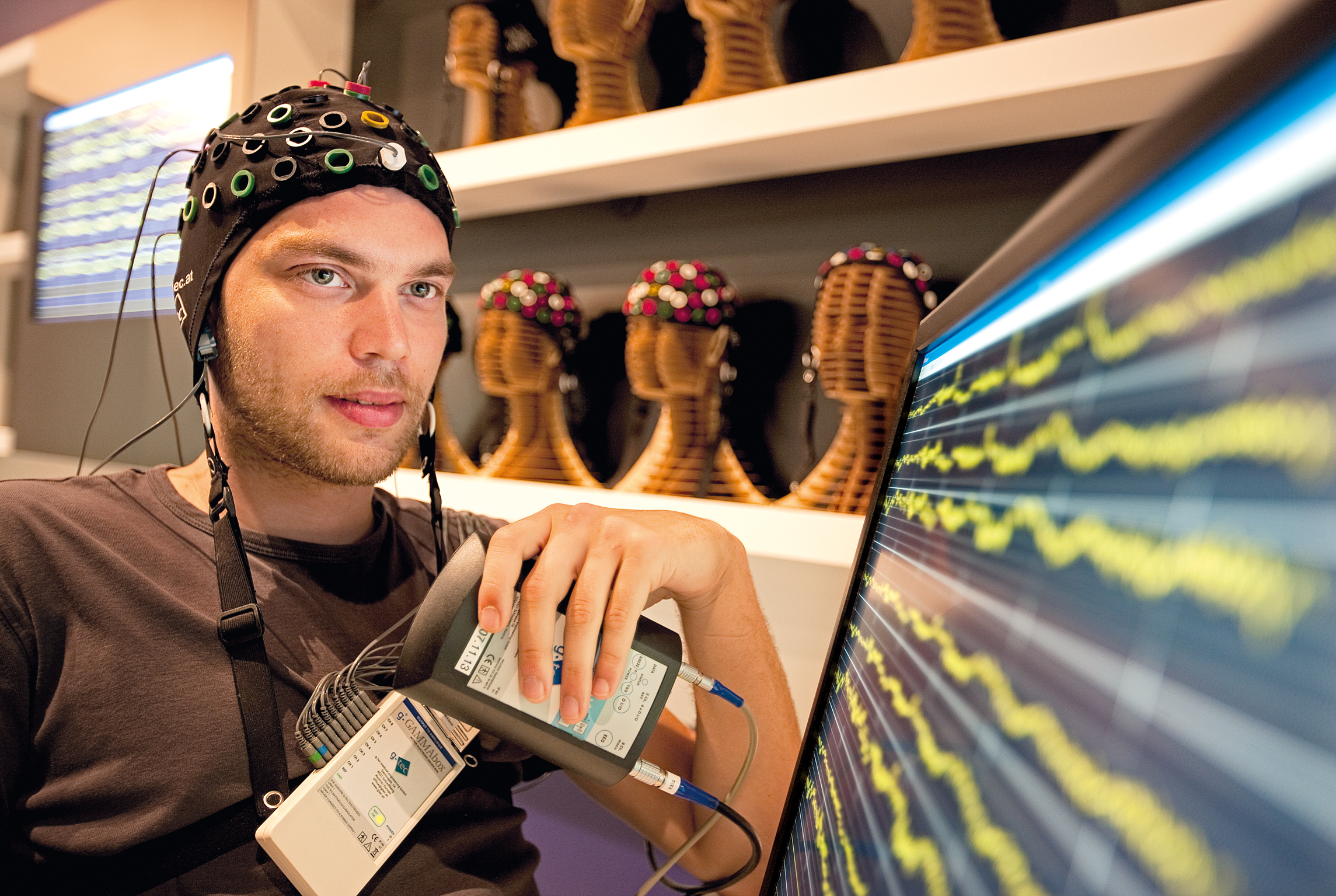Prosthetics: has Sports Media hyped up our expectations?
If you had to lose your legs to save your unborn child – would you do it?
It’s one of those typical (and frankly preposterous) TV plots that demand a choice of disproportional improbability. A recent argument I had with my housemates involved the unlikely Private Practice-inspired decision of the exact dilemma above: if you were in a car crash whilst pregnant and only had time to save either your baby or your legs – which would you pick?

Moral arguments can leave many of us high and dry: do we descend into axiomatic ethical debate..do we go into Kantian ethics and don beards (perhaps a judge's wig)? There are many moral and religious stances you could staunchly defend, but in general they rest on individual values. If you've ever been stuck around a dinner table with a few devout christians, muslims and a Dawkins-esque character, you'll have noticed the arguments circling round and round.
Leaving aside the morality, on more firm grounding this question could be asked: if you lost your legs, could a prosthetic prove even better? While reflecting on all the incredible feats we've seen in the media, my housemates suggested that we might have just reached the stage where prosthetics replace limbs with little hazard –so of course, why wouldn’t you save the baby when one is replaceable and the other is not?
- - -
Having had athletes such as Oscar Pistorius in the limelight throughout the last year as well as the celebration of London’s Paralympics last summer, we’ve become familiar with the idea that disabilities don’t necessarily limit what we can do. Participating in the London Paralympics Opening Ceremony, it was amazing to see the degree of sporting ability: watching a particularly wonderful one-legged man doing a higher leap-frog than all the able-bodied is beautiful.
Yet outside of the somewhat glamour-filled sporting events and famously (but physically-limited) scientists, the limitations of day-to-day prosthetics are still quite extensive.

While we were already marketing the “bionic ear” cochlear implants in the 70’s and retinal implants have been making progress in the last years, replacing a limb still has fundamental problems. Incorporating “sensing” of the limb without the need to visually refer to it is difficult. Without a sense of touch, manipulating a prosthetic is like trying to make your hand do something when it has gone completely numb: we have to closely observe it to know how it’s moving.
Prosthetics have improved a lot over the last years however. With the increase in brain-machine interfaces (BMI’s) we’re getting to see monkeys controlling robots with their mind, and quadriplegic amputees holding their lover’s hands. With the advent of computers and microprocessors in the mid twentieth century, we enabled ourselves to relate our brain and sensorimotor complex to patterns of circuits. Conceptualizing the use of BMI’s in the 60’s and 70’s via behavioural experiments, we’ve gone from cursor-moving via electroencephalographic (EEG) activity in the 90’s to electrocorticography (ECoG) devices that pick up fine details in the firing of neuronal populations.
Recording between 102 and 103 subjacent cortical neuron signals, ECoG devices still involve a tricky surgery where electrodes are placed directly against the brain surface. With the first ECoG BMI interface developed in 2004 for epilepsy patients, the technology has been rapidly improving with the control of robotic prostheses on a marketable horizon. Although more risky, ECoG holds the benefit of reduced noise and thus faster ‘learning’/interface integration as compared to EEG devices (which are electrodes worn over the skull), with a finer timescale of signal acquisition. The medical applications are inspiring- BMI’s can function to restore neurological impairments, providing solutions for conditions such as amputation, stroke, spinal cord injury and neuromuscular disorders.

Going back to the basics of prosthetic mechanics however: are the robotics really good enough (or better) for everyday use? Can we do our everyday thing – brush our teeth, iron our clothes, take a jog with them?
There are quite a few factors to determine in designing a good prosthetic. Want it to move, to pick things up? How will it take impact with surfaces and jarring? What will it be made out of, how will it be powered? How will it gauge pressure, or be able to sense the object it’s holding? How will it be controlled? ..With the rapid onset of research developments, most of these issues have been tackled. Let’s have a brief look at some of these:
One way of bypassing the BMI for robotic control is the use of electromyography: the analysis of electrical currents produced by your muscles. An exciting new route, it involves the surgical reallocation of the nerve endings of an amputated limb to another region, such as the pectoral muscles: thus remapping your brain to feel your missing limb when stimulating that region. In case you’re curious for more the process, called “targeted reinnervation”, is discussed by the psychiatrist and engineer Todd Kuiken on TED. By allowing electromyographic mapping of those muscles (which act as amplifiers for the nerve endings), one can learn to operate their arm. Short of EEG or ECoG, it’s an effective method, but involves a steep learning and adjustment curve. (https://www.ted.com/talks/todd_kuiken_a_prosthetic_arm_that_feels.html)
In the above talk, Todd discusses a feedback mechanism for feeling sensations by proxy: one can stimulate the nerve endings with the same vibrations that are experienced by the prosthetics. One way this has been improved recently is the finding that fingertips are, indeed, useful. The ridges of our fingertips allow us to distinguish surfaces and structures much more accurately.

By mimicking fingertip ridges in sensors at the tips of the bionic limb we have a greater accuracy for differentiating shapes, and thus can replay the sensation to a better degree on our body. Though the “playback” device is as yet still rudimentary, at minimum it overcomes the crucial issue: sensory feedback. By attaching small pressure devices (or even a blood pressure cuff) to the body, this feedback mechanism allows the person to know how hard they’re holding something, or how soft or harsh a surface is. It allows, crucially, for the person to be able to pick up both delicate objects such as wine glasses, and to hold tightly enough onto objects such as books or clothes. It overcomes the fundamental worry of smashing all the bone china with your Terminator grip, and takes away the wide-eyed worry of crushing a partner’s hand.
Prosthetics are consistently improving and with the possible increase of lost limbs through wars in the middle-East as well as the uphill battle against diseases such as ALS, there’s a lot of drive to progress. The prosthetics we have so far aren’t bad – and certainly better than the simple hook we may have fitted a century ago. But unfortunately many good devices are still expensive, and improved control of electronics by the brain is still in its infancy. Yet, it’s exciting. There’s a lot to develop, and the days of the benign Borg may hopefully be looming not too far off in the future. But if you were to ask me - would I sacrifice my limb? - On the basis of current replacements I would say no - (but then again, children frighten me half to death). Decide based on ethics, but value your limbs more: they aren't replaceable at a cheap cost yet.
1.Bragaru, M., & Dekker, R. (2012). Prosthetics and Orthotics International. doi:10.1177/0309364612447093
2.Caldwell, P., Al-bayaty, R., Kellar, C., Shin, I., Ph, D., & Stage, A. A. I. F. (2012). Biomechanics :, (Bmei), 786–789.
3.Rowland, N. C., Breshears, J., & Chang, E. F. (2013). Neurosurgery and the dawning age of Brain-Machine Interfaces. Surgical neurology international, 4(Suppl 1), S11–4. doi:10.4103/2152-7806.109182
4.Salehi, S., Cabibihan, J., & Ge, S. S. (2011). Artificial Skin Ridges Enhance Local Tactile Shape Discrimination, 8626–8642. doi:10.3390/s110908626
5.Scudellari, B. Y. M. (n.d.). Missing Touch.